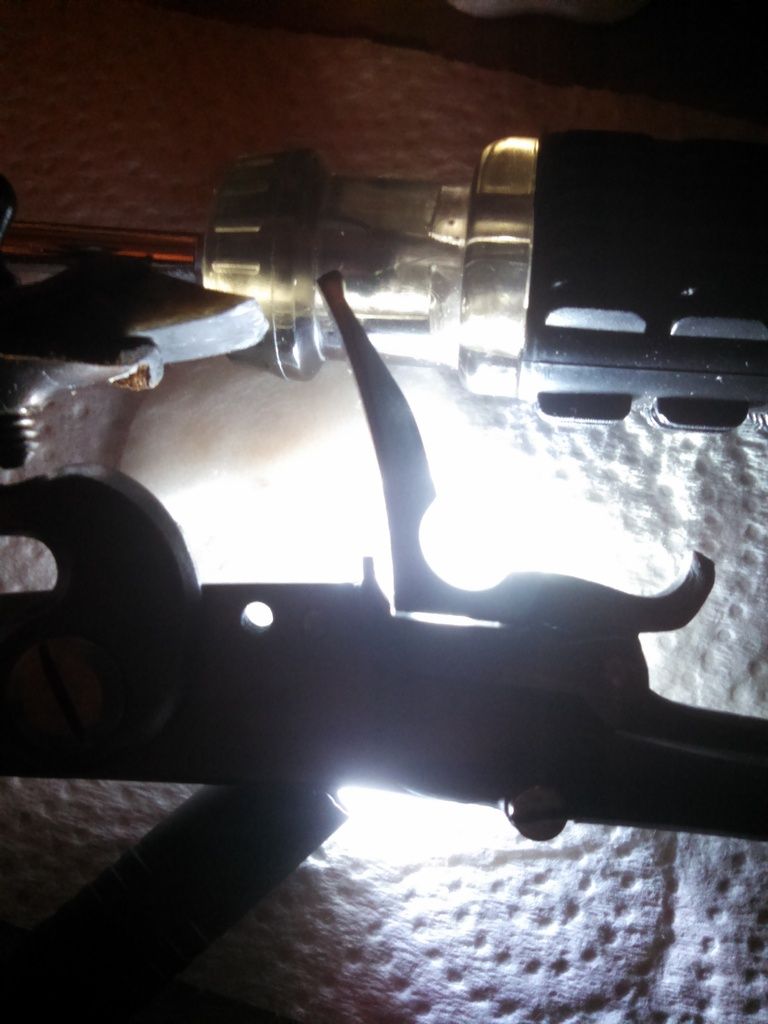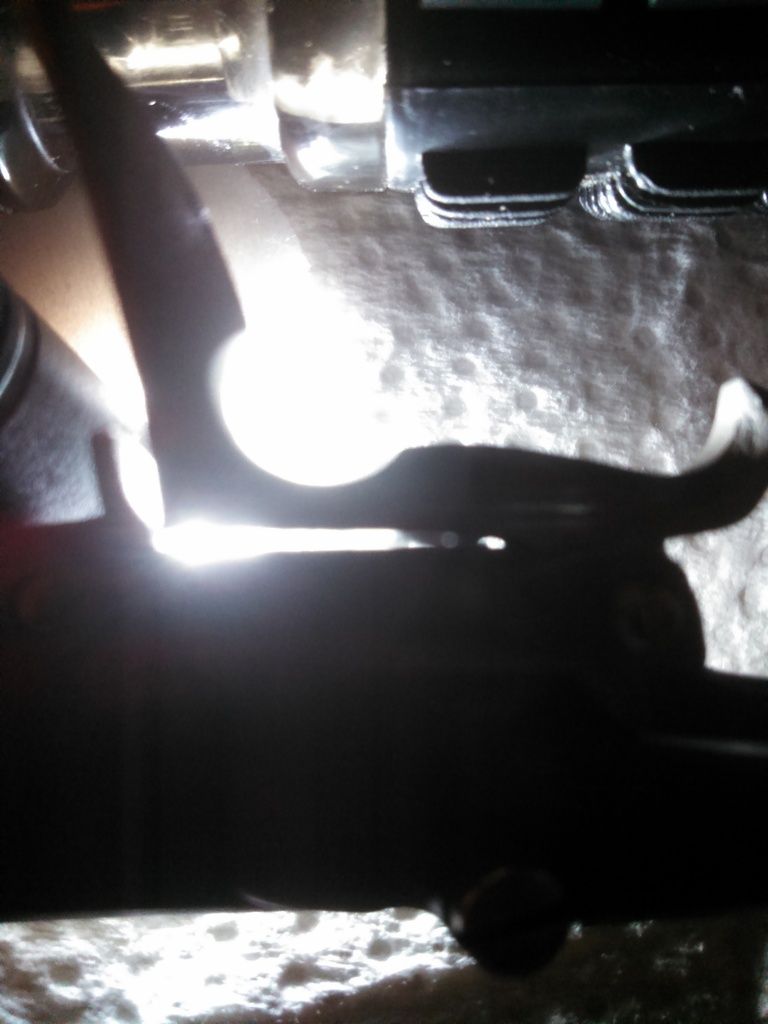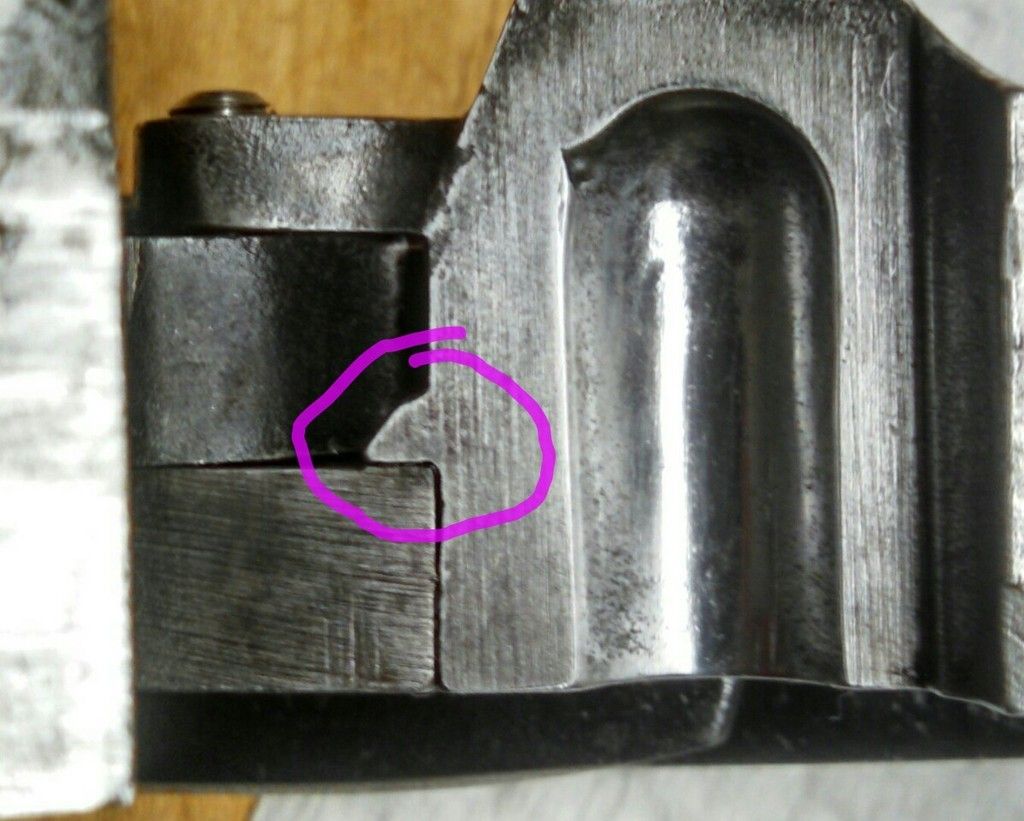Brokennock
Cannon
Okay, so now that I can post photos, I can ask a few questions more clearly. The large Siler lock on my Early Virginia smooth Rifle is fast and smooth, but, the frizzen doesn't quite seal the pan. At first I though the corner where the bottom of the frizzen turns up to the face was hitting a small lip on the shooter side of the pan. (sorry about my lack nomenclature) I appears that something is hitting closer to the hinge.


I think it is hitting the small circled triangle seen here,

If not, it would almost seem the hinge is too high as the bottom of the frizzen seems parallel to the pan, but it's not touching.
Any thoughts?


I think it is hitting the small circled triangle seen here,

If not, it would almost seem the hinge is too high as the bottom of the frizzen seems parallel to the pan, but it's not touching.
Any thoughts?





